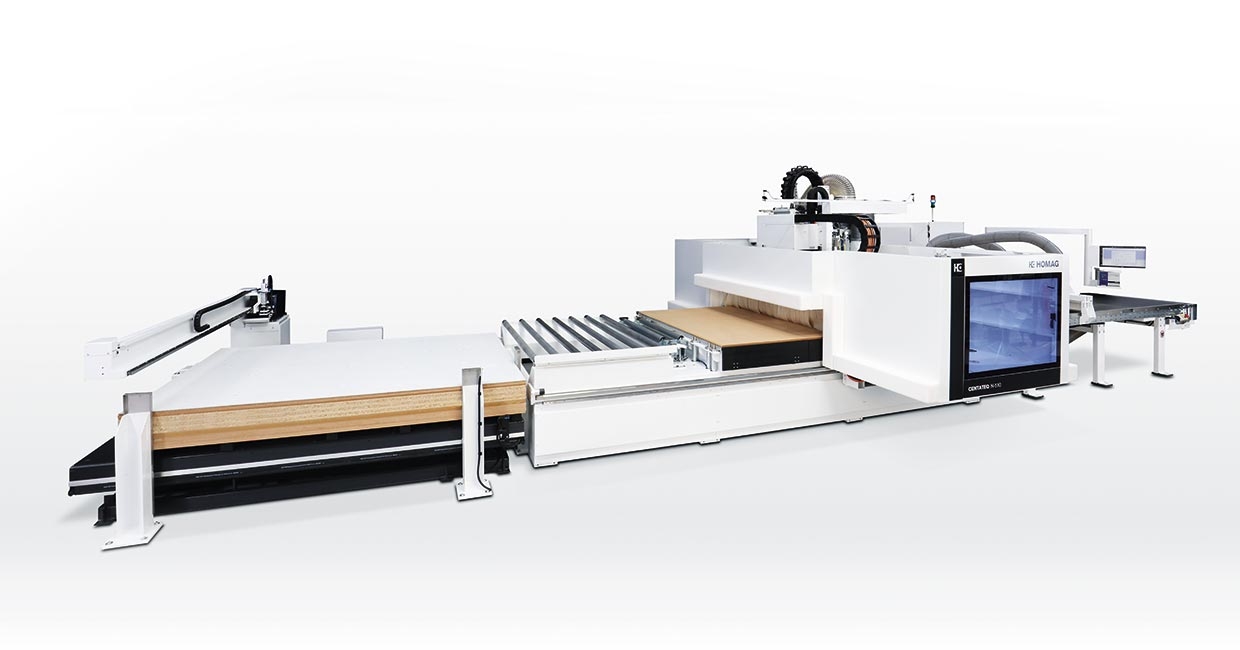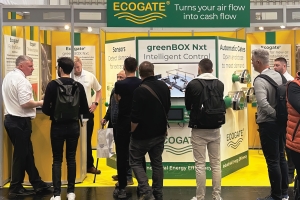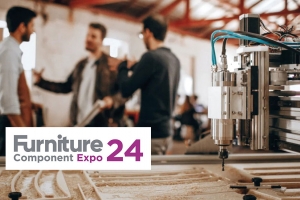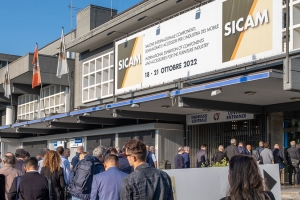The demands on modern CNC nesting machines are extensive. On the one hand, they must be efficient to help save materials and resources; on the other hand, they need to provide increased performance and be highly versatile.
It is precisely these demands that Homag has responded to with the design of its new generation of CNC nesting machines.Improving sustainability, flexibility and performance were all guiding factors in the development of the new models.
Homag's nesting machines are engineered to make easy work of machining and dividing panel-shaped materials for carcass furniture production and the dividing and finishing of furniture fronts. They also make the processing of stair stringers and door leaves effortless.
With the release of the Centateq N-210 and N-510 CNC machining centres in November 2021, HOMAG has truly redefined nesting. Clever revisions and creative engineering, with a focus on waste reduction and sustainability, have significantly increased the value proposition of these machines.
More flexible workflow configurations
The new CNC machines not only handle the classic nesting tasks, but also their five axis processing capabilities provide added flexibility. The maximum total height in the Z direction on these new machines has been extended, enabling the processing of material thicknesses up to 260 mm.
The new generation of machines is available in both stand-alone and automated configurations. They can be specified with updated matrix table arrangements to increase both performance and flexibility.
In addition to the table structure, the vacuum, air cushion concept, and material handling components have been rethought and further optimised. To improve non-productive times and setup, the tool changing system has also been updated.
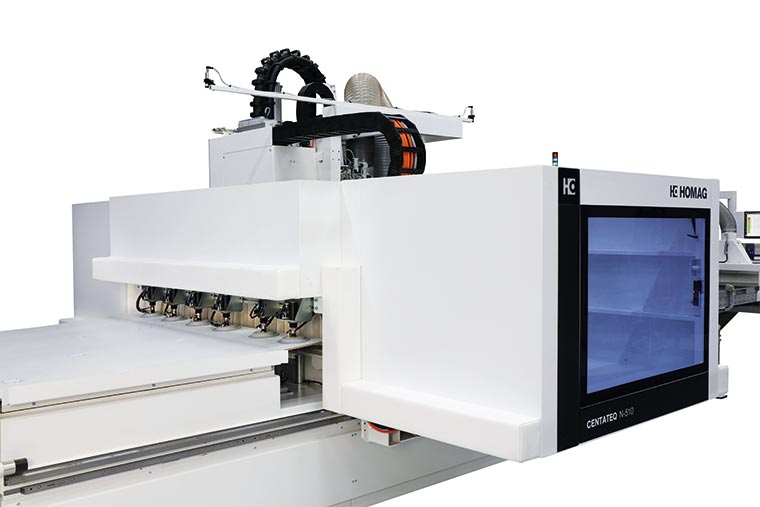
Automation adaptations for changing performance demands
Performance requirements often change as Homag’s customers grow their businesses. To accommodate this, the base machines can be upgraded to meet shifting performance demands with 14 automation options.
The performance-enhancing automation programs for the new series were developed for high volume workflow demands. They include, for example, the addition of lifting tables for easier loading of material; automatic belt conveyors for pushing out finished parts; and complete integrations with saw and storage-system combinations or material handling robots.
Dynamic shuttle operation
The pendulum mode, which allows the operator to continuously swap out parts while the machine runs at the other end of the bed, is extended using a separate vacuum supply and ventilation of the table sections. This highly efficient and seamless alternation between the left and right table sections is extended by ‘dynamic pendulum operation’.
In a similar way to the Homag console table machines, the vacuum fields are assigned to the table sections and can be controlled individually. Homag has also created the ability to dynamically control the machines’ air cushion functions. This means that individual workpieces of different sizes and surface finishes can easily be processed in pendulum mode.
Material yield utilisation and part identification drives production
Sustainability is at the forefront of the utilisation of these machines. They were designed to generate as little material waste as possible. Thus, the nests are optimised via intelligent software solutions to deliver the best possible yield.
To ensure parts are identified for secondary processing, such as edgebanding, and for assembly after production, barcode labels can be applied to each item. These labels provide valuable information for transporting parts through the production process. For example, the type of material, edgebanding information, part size, order number and even part-related graphics and company logos can be added.
Active vacuum solutions – new valve technology
The new series of nesting machines provide many different table sizes to suit specific needs and requirements. Independent of the table size, three configurations of the automated vacuum field layouts are offered – Classic, Advanced and Premium.
The Classic layout is the standard for HOMAG’s earlier nesting models. The field sizes are designed in such a way that the underlying vacuum zones can be applied to concentrate vacuum pressure to any number of common panel sizes.
The Advanced layout creates a more balanced machine. The vacuum field sizes are engineered at both the front and back of the machine to allow for flexible fixturing of a wide range of panel sizes, as well as smaller pre-formatted parts.
The Premium layout consists of many small, symmetrical vacuum fields that are controlled individually. With this variant, the operator can activate only one field, for even more flexibility and efficiency in the future. New valve technology has been installed in the table for this purpose. It generates the vacuum output required for nesting workpieces and precisely maintains that vacuum pressure throughout the nesting process so that no excess energy is required.
The matrix table option consists of a raised island and groove pattern that has a consistent grid dimension to provide optimal vacuum flow. The transition between the individual matrix table sections has been re-designed so that this transition point is always constant and suction cups can be positioned across these segments without restriction. This is a very beneficial feature for five axis machining.
More options for tool changes and drilling gears
For short changeover times, the eight-place tool changer riding along the X-axis of the machine can be selected as standard. Depending on the variety of machining and application requirements, different versions can also be selected to accommodate 14 or 22 tools. The previous benchmark for tool changing times on the HOMAG nesting machines has been significantly reduced and the chip-to-chip tool change times have been improved.
Within some of the automated configurations, the changing of the tools can be carried out in parallel with the loading of panels, saving additional time. For those requiring advanced tool changing technology and speed, an X/Y ride-along tool changer is available which can be paired with a second tool changer to provide a combination of speed and flexibility.
The new nesting series provides a wide selection of drilling gears with up to 21 different drilling gear units. Various combinations of vertical and horizontal drilling, as well as grooving, can be handled by these units without the machine requiring a tool change. HOMAG’s patented quick-change system for drill bit changes is also incorporated.
Five axis processing on the Centateq N-510 brings added value
For additional versatility, the proven Homag Drive5CS five axis head is now provided with the Centateq N-510 series. As well as traditional nesting, this series can be used as a conventional CNC machining centre. Parts can be elevated, referenced, and machined on five sides.
The new model provides further nesting operations in addition to the typical ones such as part sizing, shaping and vertical drilling. The extra functions include the horizontal drilling for dowels, the creation of mitres with a 350 mm saw blade, and the efficient machining of solid wood components such as stair stringers and door components.
Greater sustainability and service life
Commenting on the innovative design of the newly released models, Simon Brooks, Homag UK’s managing director said: “As well as configuring the new nesting machines to meet specific technical and functional applications, these nesting CNCs are engineered with a focus on conserving resources and achieving sustainability.
“Times for tool changing have been shortened whilst the extraction of dust and the cleaning of the spoil board have been significantly improved. Both the new CENTATEQ models are highly efficient, increasing yield and decreasing waste.
“Engineering advances have minimised the use of electricity and compressed air, and maximised dust collection. Where possible, machine movements and operating sequences have been combined and shared to increase the service life of machine components and bring additional value to HOMAG customers.”
For a demonstration or more information on HOMAG’s machinery or software, contact Adele Hunt at Homag UK on 01332 856424.



